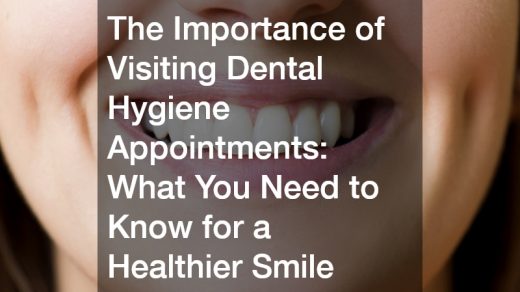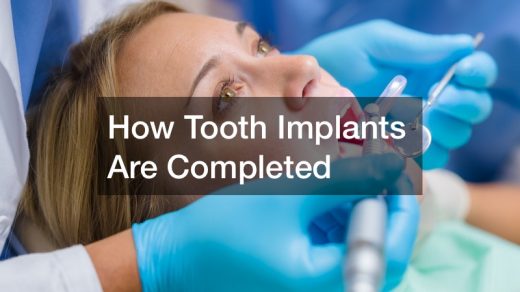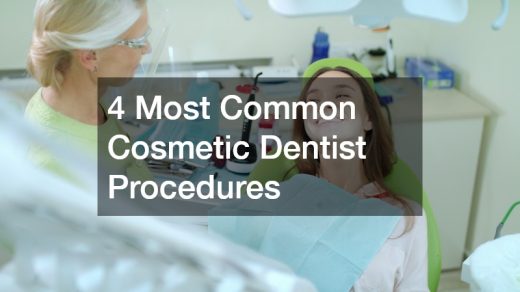How The Best Cosmetic Dentists Create Long-Lasting Dental Makeovers
Your teeth take a beating over time. Oral injuries, age, dental conditions, or normal wear and tear inevitably take a toll on your teeth. Luckily, you can restore the shine in your smile by seeking dental services from the many cosmetic dentists in your area. For long-lasting dental makeovers, take your time to evaluate the dental services near you and only settle for one that ticks most of the critical boxes, if not all. This guide helps you sift through cosmetic dentists for one that will restore your smile as naturally as possible without making you look goofy.
1. What Sets the Best Cosmetic Dentists Apart
As with any practice, attention to detail, an uncompromising commitment, and fidelity to precision set the top cosmetic dentists ahead of the rest. For this reason, your choice of a dental service is the most important step in your search for the best dental makeovers. Take your time to choose a cosmetic dentist. Among the things you should watch out for are the before and after images they put up.
However, don’t stop at appearance only. Scrutinize their dental crowns and porcelain veneer images to ascertain that cosmetic dentists do all they can to give their clients above-par results. Look out for symmetry. Compare the two halves of the smile when scrutinizing the before and after pictures.
The color gradient is another element you should consider. Did you know the color of your teeth isn’t uniform throughout? They fade gradually, starting from the color at the gum line and subtly to a different one at the edge of the incisal. While this aspect of divine design is hard to replicate, a good cosmetic dentist can recreate the color gradient, making your teeth look almost natural.
Still on dental color variations, the shade change isn’t just uniform from one color to another. Other aspects can change your tooth’s color, such as intaglio, a printing terminology. It involves cutting grooves into a metal plate, applying ink, and wiping it off. The only ink that remains is the one inside the groove. When you press paper against it, the ink inside the grooves is imprinted on the paper.
The same process happens when acid pitting causes small patches of teeth discoloration. A great dentist aims to reproduce this ‘defect’ to make your teeth look more realistic. However, they shouldn’t overdo it.
2. A Smile Makeover Journey: From Consultation to Completion
Your smile makeover journey begins when you enter the dentists office for a consultation. This consultation involves an appointment with a cosmetic dentist specializing in dental makeovers. During the first visit, the focus will be discussing your goals and expectations regarding a transformed smile.
The next phase involves the dentist inspecting your gums and teeth to establish their current state and flag issues that require correction before embarking on cosmetic treatments. This could involve treating gum disease or tooth decay. The cosmetic dentist’s goal is to make sure your teeth are healthy inside as much as they’ll look from the outside once upon full restoration.
The next phase of the dental cosmetic makeover journey is creating a treatment plan that’s personalized and tailored to your desires and needs, which could involve such cosmetic dentistry procedures as dental implants for missing teeth, orthodontics (clear aligners or braces), dental crowns, porcelain veneers, or teeth whitening. Upon treatment completion, the appointments will begin for every procedure based on the timeline agreed with your dentist. How long the complete smile transformation will take depends on how complex your case is.

3. The Importance of Customization in Dental Makeover
You have a great say in determining how you want your dental makeover to look. The cosmetic dentist will factor in everything that would improve the quality of your smile. Tell them what makes you happy or not with your current smile. Tell them what you want to change, and then listen to their answer.
Sometimes, your expectations may be too unrealistic and unimplementable. Custom dental makeovers first take in the qualities of your smile. They include several personalized procedures executed over time as guided by your cosmetic dentist. Although you’re most likely looking to enhance the aesthetics of your smile, a good cosmetic dentist will also seek to restore your oral health and function.
Proper functioning teeth allow you to bite into almost anything and maintain healthy nutrition. Besides, oral health will suppress gum disease and tooth decay risk. Remember, no matter how many makeovers you undergo in your lifetime, it’s your teeth and your smile; you get to determine what you consider a beautiful smile. The choice is yours if this means wearing dental bridges, braces, or clear aligners.
4. Understanding the Latest Cosmetic Dental Techniques
Other popular dental techniques are gum contouring and clear aligners. The former involves reshaping your gums to reposition them correctly. On the other hand, clear aligners provide a favorite alternative to wearing wire-and-band braces, which are considered ugly. The beauty of clear aligners is that they’re made using durable transparent plastic and are comfortable to wear.
Another popular dental technique is dental bonding and porcelain veneers. The former helps with chipped and cracked teeth or those with gaps. Dental bonding is efficient, easy, and quick. It’s, however, recommended for teeth with moderate-level issues.
For more extensive damages, consider porcelain veneers and paper-thin tooth-colored porcelain shells for coating the front surface of your tooth. This technique is prevalent because it deals with more complex dental problems and can last up to fifteen years. If you have gaps in your teeth and teeth whitening has failed despite several treatments, give porcelain veneers a try.
A prevalent trend is 3D Dentistry, which uses a 3D printer to enhance a dentist’s work while lowering treatment costs. Courtesy of this technology, your dentist can create surgical models, clear aligners, and physical models for dental implants.
They use cone-beam computed tomography tools to achieve the desired result. You also get to see your entire mouth in a 3-dimensional way. This helps make things like prepping clients for reconstructive surgery and determining the correct placement for affordable dental implants much easier.

5. The Role of Digital Smile Design in Cosmetic Dentistry
The next time you visit your local cosmetic dentist, ask them about the Digital Smile Design (DSD) technique. This innovative technique lets dentists customize treatment plans for every patient. It creates a digital impression of your preferred smile.
To enhance your teeth’ function and aesthetics, your dentist can use DSD to create dental implants or bridges for your teeth. Whatever reason you may have, ask your dentist if they use DSD, as it can produce stunning results. It’s no wonder that technology has become a gold standard in dental makeovers.
6. Dental Crowns: Transforming Smiles with Precision
If a picture is worth a thousand words, how much more is a smile? Words aren’t enough to explain the impact of a smile, both on its wearer and those it’s directed at. Crowns in dental makeovers aim to cover weakened or damaged teeth that downgrade the quality of a smile. These teeth ‘caps’ restore your teeth’s function, enhance their aesthetics, and straighten them.
The first step in a dental crown process is diagnosis, which involves a detailed examination at your dentist’s office. Next is tooth preparation to provide room for the crown. The preparation involves removing a part of your affected tooth’s outer layer so the ‘cap’ can slide in. A dentist creates an impression of the prepared tooth to create a fitting crown. The goal is to ensure the crown matches your tooth’s size and shape.
To protect the prepped tooth, the dentist fits it with a temporary crown as they prepare a permanent one in a dental lab. Once the latter is ready, it’s fitted and cemented on the tooth, ensuring it aligns correctly with your bite. The goal is to make it look as natural as possible.
Among popular materials for dental crowns are metal, all-ceramic or all-porcelain, porcelain-fused-to-metal (PFM), and porcelain crowns. Benefits of dental crowns include longevity and strength, teeth function restoration, and versatility. But perhaps the main reason people seek dental crown services is their teeth’s aesthetic appeal, aka a beautiful smile.

7. Achieving Natural-Looking Results with Cosmetic Dentistry
Did you know you can change the appearance of your teeth if you don’t like how they look? Perhaps they are discolored or crooked and constantly bash your self-confidence whenever you smile. Well, cosmetic dentistry can help you do something about it. The technology is increasingly sought by those seeking dental makeovers with natural-looking results.
Among ways cosmetic dentists are restoring smiles and boosting people’s confidence is through dental implants. The goal of cosmetic dentistry is to improve your teeth’ function and their aesthetics. Chances are the techniques your dentist will recommend for natural-looking teeth include porcelain veneers, teeth whitening, gum bonding, and clear aligners. Your dentist should be able to recommend the best solution for your teeth.
8. Inlays and Onlays: Enhancing Function and Aesthetics
Dental clowns have been the go-to cosmetic treatment for dental makeovers because they cover all your teeth surfaces. Granted, dental crowns have their place and time. However, a significant structure of your tooth will have to be removed for the ‘cap’ to fit in. In to the rescue comes inlays and onlays, conservative alternatives offering not just aesthetics but durability as well.
Inlays and onlays are customized dental restorations that seek to repair tooth damage and decay. This restorative dentistry involves fitting a tooth’s grooves with inlays while covering the larger part of your tooth with onlays that extend beyond one or several cusps. Crafted from tooth-colored materials, the inlays and onlays bond to your tooth to restore its function, improve its aesthetics, and improve its durability.
They are somewhat similar to fillings, safe for one critical difference: Dental fillings involve direct restoration, as they are created in your mouth. On the other hand, inlays and onlays are prepared outside your mouth and then fitted in, a process known as indirect restoration. Their critical goal is to enhance the aesthetics and function of your tooth.

9. Preserving Your Dental Makeover: Maintenance Tips
Not even the best cosmetic dentists can guarantee that dental makeovers will last as long as they should. This is because, after a dental makeover, you are responsible for maintaining them. Of course, you’ll need to visit the dentist as instructed to keep your teeth in mint shape, but the overall responsibility depends on you.
One of the ways you can keep your new smile bright is through regular flossing and brushing. Brush at least twice every day. Another great tip is to visit your dentist twice yearly so they can monitor your teeth and give them a thorough cleaning to eliminate stubborn stains. You should also avoid chewing hard objects that could compromise the implants or aligners.
Another great way to keep your dental makeover intact is by eating a healthy diet with minimal intake of acidic and sugary foods, soda, and alcohol. If you grind your teeth while asleep at night, get a mouthguard, which could also be useful for playing contact sports. Also, minimize consumption of teeth-staining beverages and foods such as black tea, coffee, and wine.
Brush your teeth after consuming these beverages to avoid staining them. Lastly, stop smoking as it invalidates the results of a dental makeover. Smoking compromises your oral health and stains teeth.
10. Orthodontic Options for Smile Enhancement
According to New Braunfels Orthodontic Associates, the role of an orthodontist or cosmetic dentistry professional is to diagnose, prevent, and treat facial and dental irregularities to achieve harmony, balance, and function between face and teeth. A dentist can combine orthodontic treatment with orthognathic (jaw) surgery in non-growing patients for maximum benefits. Among popular orthodontic procedures are braces, which can take one to three years.
However, there are interceptive procedures that take a few months to deliver dental makeovers. A dental treatment’s duration depends on a patient’s facial growth and mouth and commitment to at-home dental care. Visit your dentist twice yearly for routine check-ups during the orthodontic treatment span. Your dentist will teach you about taking care of the braces, gums, teeth, and overall oral care during the treatment.
The best cosmetic dentist can address your dental challenges and offer dental makeovers. Depending on your goals and expectations, a cosmetic dentist will recommend the perfect treatment for your teeth. Whether these are stainless steel braces, clear aligners, or crowns, the perfect solution depends on the state of your teeth and why you want them fixed.



